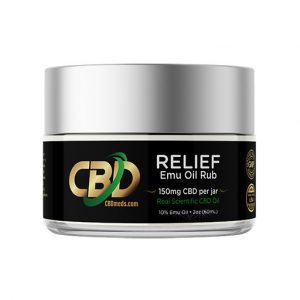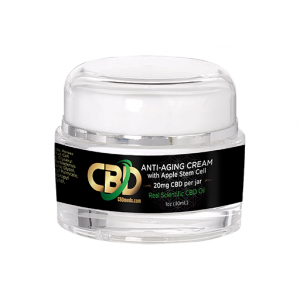Overview of CBD use
People have used CBDs to treat a variety of medical conditions for ages. Thousands of years, in fact. Methods for using the cannabis plant for medicinal purposes has not always been the same. Some form of medical marijuana has always been a part of the human experience, however. Today, CBD manufacturers produce medicinal products that provide relief for a vast range of ailments. So many that people sometimes suspect an element of snake oil-like wizardry within the industry.
To be fair, there are far too many ‘treatments’ touted for fixing what ails us. Many of which have little to no bearing in reality. Are CBD products just another fad that is too good to be true? Are researchers able to confirm any of the claims connected to CBD use? You’ll be happy to know that the answer to both questions are favorable to CBDs and its proponents.
CBD Oils Showing Progress
Every day, more research surfaces suggesting that the health benefits and healing powers of CBD oils are real. More than confirming that CBDs are helpful, CBD research also shows that physicians can achieve measurable corrective results with CBD oils. That is, of course, fantastic news for anyone looking for a treatment path that aligns better with nature. Much of what modern western medicine often provides is off-putting for many people.
Why Does CBD Work?
The answer seems to lie in the relationship between cannabinoids (CBDs) found in both the cannabis plant and in the human body. CB1Rs and CB2Rs (cannabinoid 1 and 2 receptors, respectively) are found throughout many systems in the human body. These receptors are responsible for receiving cannabinoids and play a crucial role for our health.
Both CB1Rs and CB2Rs, for example, assist in areas such as the brain, the nervous system, thyroid, bones, liver, and much more. Cannabinoid receptors are responsible for regulating the immune system. They also maintain chemical balances within the brain, and control pain, to name but a few. It is no wonder that researchers are looking into so many applications of CBD products.
The cannabis plant has more than 50 different cannabinoids. For health purposes, cannabidiol (CBD) is the most widely used, as it does not bring with it the same psychoactive effects that tetrahydrocannabinol (THC) is known for.
Case Studies showing benefits of CBDs
Recent medical data reveals surprising results from CBD use. Here, we will look at important case studies that provide anecdotal evidence of CBD health benefits.
Lung Cancer Tumor Halved in Just Three Months
First up, we have our inspiration for this report, hence the title of the article. Doctors tasked with the treatment of an 81-year-old patient with lung cancer have recently documented another possible use for CBD products.
Instead of opting for the standard treatment paths being offered by his doctors, the 81-year-old decided to go the CBD route to cure his cancer.
It is unclear who was more surprised by the results of the three-month treatment cycle of CBD use. Doctors were excited, though, to say the least. In such a short timeframe, doctors witnessed the patient’s lung cancer tumors shrink to nearly half their original size. That is surprising due to the fact that lung cancer tumors very rarely reduce. To make matters even more interesting, the patient’s cancer began to reverse, as well.
There are, of course, many things about a story like this that can get people excited. The thought that a cure for cancer is nearer than many expect is an obvious point of interest. As is the idea that researchers could potentially develop a treatment path for cancer that would prove to be far more affordable than anything else available today.
CBDs Used for Cancer Treatment
Another interesting aspect of this story is that it provides additional data to an ever-growing pool of similar findings around the world.
There is an increasingly common theme in the field of cancer research that the combination of CBD and THC (both cannabinoids derived from the cannabis plant) can slow, stop, or even reverse the spread and growth of cancer cells and tumors.
One study, carried out at the University of London, shows such data. Researchers found that when THC, CBD, and radiation therapy are combined, the results are far more impressive than what any one of those elements can do on its own. The study goes into great detail as to how and why such an effective treatment takes place. To summarize, the endocannabinoid system within the human body can be stimulated to respond better to radiation therapy.
The list of anecdotal evidence goes on and on. Many may prefer to wait for the FDA to collect enough data to make a claim they can stand behind, but with so many promising stories it seems likely that many others will explore the healing properties of CBD products more regularly as we move forward.
Other medical applications for CBD Therapy
The applications for CBD use for cancer treatments is certainly exciting. Doctors are also using the compound in many other ways, as well.
One area that researchers are applying their skills to is pain management. Migraine pain and its sources are one area of particular interest. Migraines are one of the most difficult types of headaches to treat because they have such a profound effect on the afflicted person. When asked, patients suffering from migraines often have difficulty in describing the pain accurately. That makes the work of singling out possible root causes for the headaches quite a challenge for medical practitioners.
Migraines result from a wide range of sources. Some sufferers get migraines from environmental factors while others from stress. Some from inflammatory diseases and others from the nervous system and hormonal actors. Medical professionals identify the cause of migraines on a case-by-case basis as a result.
The complexity that comes with migraines and the associated research makes coming up with a one-size-fits-all treatment plan incredibly difficult, because there is no way to universally treat an underlying cause that is different for everyone. As a result, most migraine medication is designed to target the symptoms. They often come with a long list of possible side effects.
Why Does it Work?
The wide range of possible causes of migraines is precisely what makes CBD treatment so interesting. As we already know, CBDs go hand-in-hand with the endocannabinoid system within the human body, and that system plays a major role in almost every vital system within the body. The logic is clear. By taking regular doses of pure CBD oil, patients support all the systems linked to the root of the migraine problem. CBD products are the closest thing that we have, in fact, to a migraine solution that makes sense.
Conclusion/Summary
When it comes to cancer treatments, modern medical science is still a ways away from coming to any conclusive answers. Cannabinoids are promising, but we can’t say that CBD oil is a tried and true cure for cancer. It is, however, difficult to ignore the large amount of anecdotal evidence suggesting a possibility that researchers are getting positive results with CBD applications.
The FDA is still years away from completing the volume of clinical trials necessary to make a sound recommendation. In fact, it takes years for medications of all kinds to finally be approved for widespread use. That said, we can still get many signs of progress from work being done worldwide.
If you are curious about how to utilize CBD oils as a part of your treatment program, speaking to your healthcare provider about success stories others are experiencing might just lead you in the right direction.







